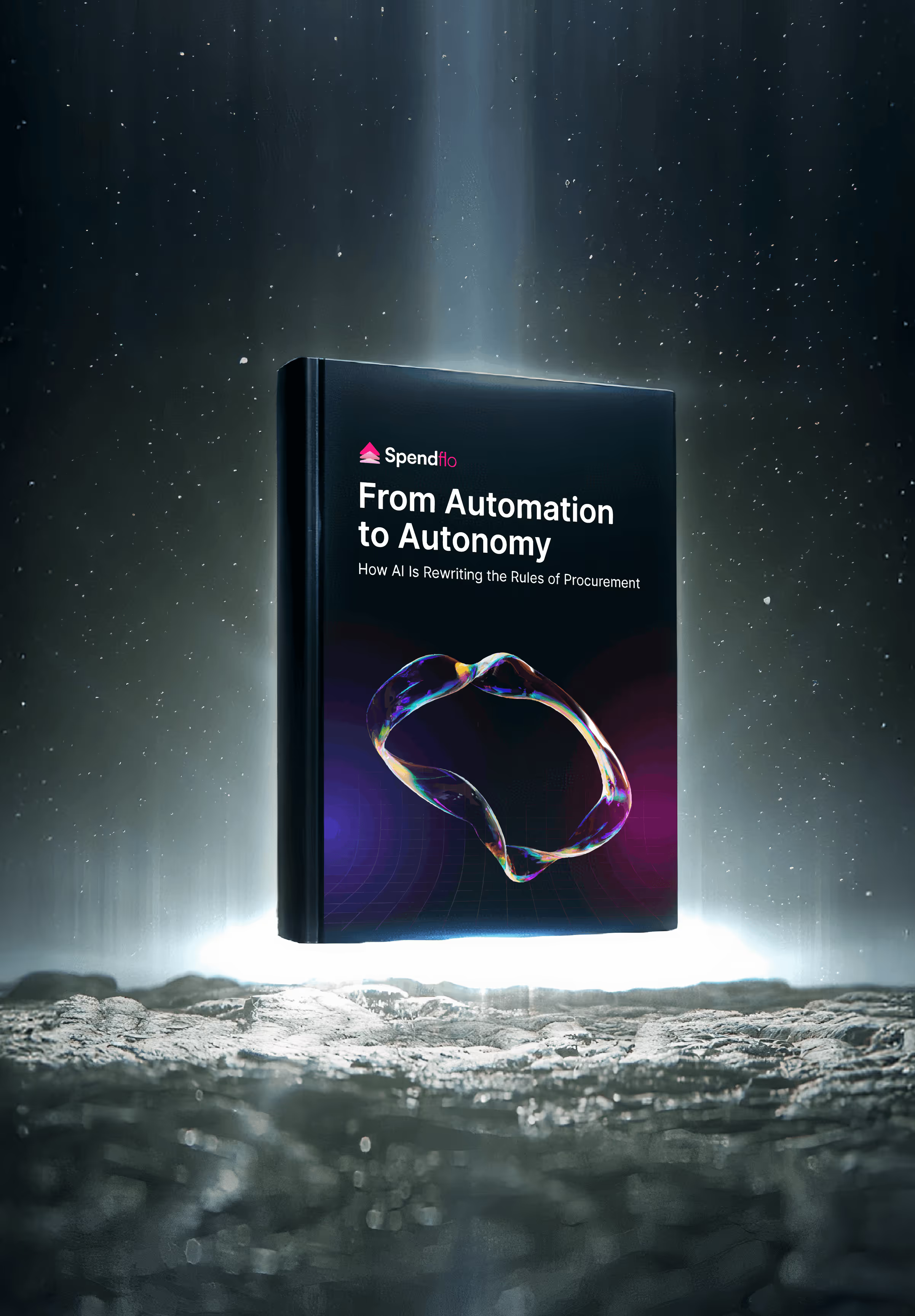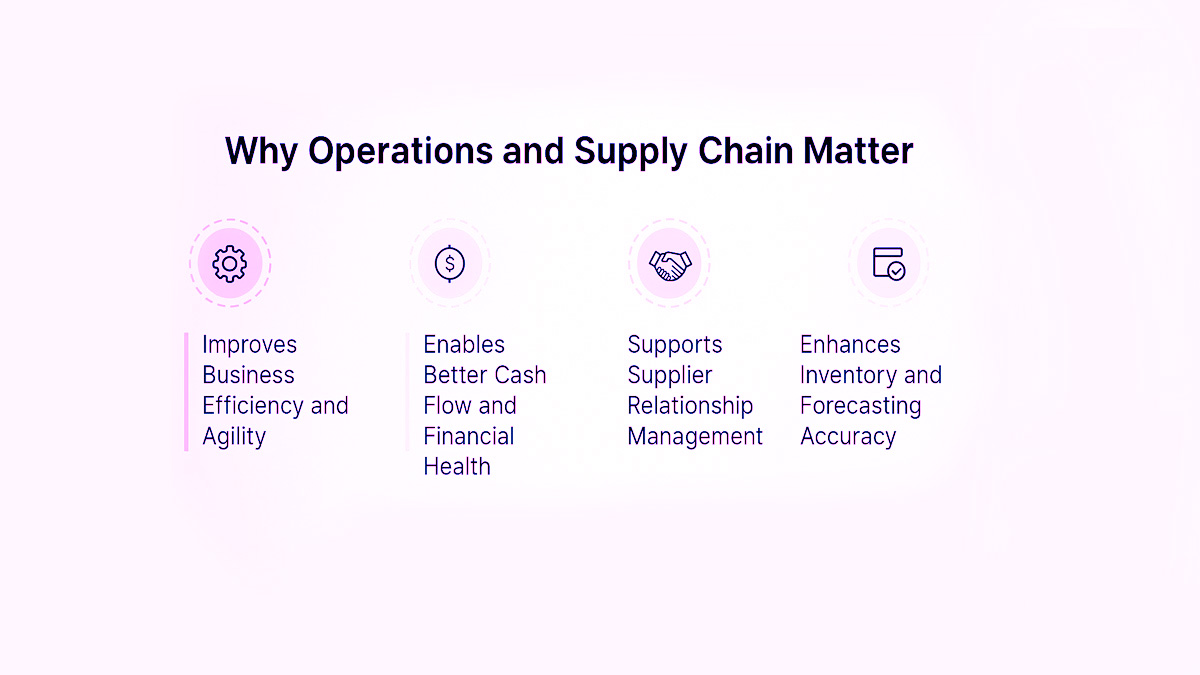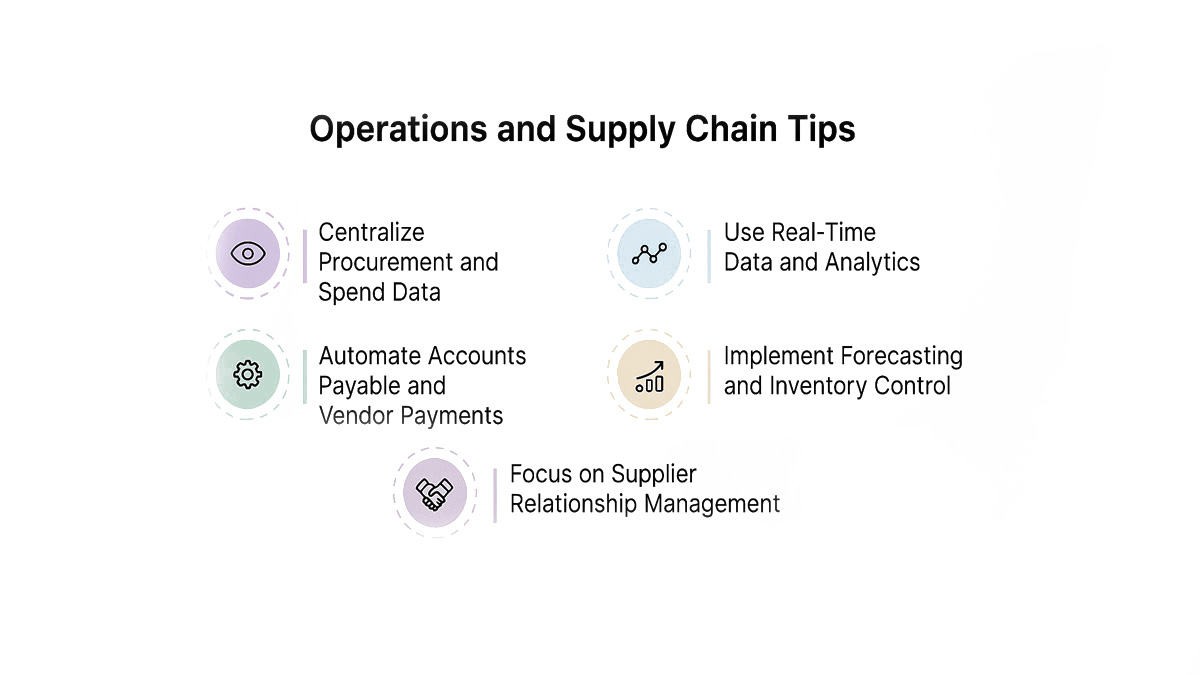

All You Need to Know About Operations and Supply Chain Management

All You Need to Know About Operations and Supply Chain Management
Understand operations and supply chain management with key benefits, challenges, and best practices to improve efficiency and strengthen supplier relationships.


Managing your operations and supply chain isn’t just about logistics - it’s about maintaining control, optimizing costs, and building resilience in a fast-changing business environment. Whether you’re a growing startup or a scaling enterprise, your operations and supply chain strategy plays a direct role in your cash flow, financial health, and long-term success.
In this guide, we’ll explore what operations and supply chain management (OSCM) really means, how it works, why it matters, and how you can optimize it with best practices and the right technology.
What this blog covers:
- What is operations and supply chain management?
- Similarities and differences between operations and supply chain management
- Why is operations and supply chain management important?
- Challenges of operations and supply chain management
- 5 best practices in operations and supply chain management
- Operations or supply chain management: which is right for you?
- How Spendflo helps with operations and supply chain management
- Frequently asked questions on operations and supply chain management
What is Operations and Supply Chain Management?
Operations and supply chain management (OSCM) is the coordination of business functions involved in producing goods and services, from procurement and production to distribution and delivery. It includes managing resources, vendor relationships, inventory, workflows, and more - ensuring products or services reach customers efficiently and cost-effectively.
Together, these functions create a streamlined, responsive ecosystem that keeps your business moving. Supply chain managers play a key role in aligning both internal operations and vendor workflows.
Similarities and Differences Between Operations and Supply Chain Management
Operations and supply chain management are often used interchangeably, but they serve different (yet connected) purposes. Here's a quick breakdown:
In practice, these two functions must work hand-in-hand. Seamless coordination between internal teams and external vendors ensures efficient, resilient, and cost-effective business operations. This coordination strengthens business processes across departments.
Why Is Operations and Supply Chain Management Important?
OSCM supports critical aspects of business performance - from controlling expenses and managing cash flows to improving responsiveness and customer satisfaction.

Here are the reasons why strong OSCM is essential:
Improves Business Efficiency and Agility
Well-structured operations and supply chain workflows eliminate bottlenecks, streamline approvals, and reduce unnecessary steps. It also supports better project management by removing delays across production timelines. This helps teams make quicker decisions, fulfill orders faster, and scale efficiently.
Enables Better Cash Flow and Financial Health
Accurate tracking of accounts payable, vendor payments, and inventory levels improves cash flow forecasting. Managing raw materials efficiently also helps avoid production slowdowns. By avoiding overordering and reducing late fees or interest charges, businesses can maintain stronger financial health.
Supports Supplier Relationship Management
Strong OSCM helps build long-term supplier relationships. Reliable communication and timely payments lead to better credit terms, preferred pricing, and fewer vendor disruptions. It ensures better global sourcing strategies for cost and availability.
Enhances Inventory and Forecasting Accuracy
With real-time data and analytics, businesses can improve inventory planning and reduce overstocking or shortages. It also supports quality control by identifying performance issues early. Better demand forecasting translates into fewer rushed purchases and more cash savings.
Drives Cost Control and Risk Mitigation
An efficient supply chain allows businesses to control expenses and reduce costly mistakes. Standardized invoice processing, AP automation, and contract management help prevent fraud and ensure regulatory compliance. This leads to more stable production systems and reliable vendor relationships.
Challenges of Operations and Supply Chain Management
While OSCM brings enormous benefits, it also comes with challenges - especially when processes are manual or outdated.
Lack of Visibility and Tracking
Fragmented systems lead to poor visibility across departments, making it hard to track inventory, vendor payments, or procurement timelines. Many service firms face this challenge as they scale their operations. This results in missed renewals, overstocking, and uncontrolled expenses.
Cash Flow Issues and Cost Overruns
Late invoice approvals, manual AP processes, and inaccurate forecasting can disrupt cash flow. Businesses may face shortages, interest charges, or unexpected expenses that hurt financial stability.
Supplier and Vendor Disruptions
Global supply chain volatility, poor vendor communication, or lack of relationship management can cause delivery delays or failed contracts. These disruptions affect production timelines and customer satisfaction.
Manual Processes and Data Silos
Without automation, teams rely on spreadsheets and emails for procurement and vendor coordination. This slows down supply chain processes and increases manual errors. This not only leads to reduced efficiency but also increases the risk of human errors and fraud.
5 Best Practices in Operations and Supply Chain Management
To overcome challenges and unlock the full potential of OSCM, organizations must adopt best practices that enable control, visibility, and scalability.

Centralize Procurement and Spend Data
A single source of truth for all vendor contracts, invoice statuses, and spend data eliminates confusion. Centralization helps monitor vendor payments, track outstanding invoices, and analyze historical data for smarter planning.
Use Real-Time Data and Analytics
Real-time dashboards provide visibility into inventory, vendor performance, and procurement timelines. This supports better cash flow management, reduced mistakes, and stronger decision-making backed by data.
Automate Accounts Payable and Vendor Payments
AP automation improves invoice processing accuracy and speeds up approvals. Businesses avoid late fees, benefit from early payment discounts, and reduce the manual workload on finance teams.
Implement Forecasting and Inventory Control
Forecasting based on sales trends, vendor lead times, and historical usage helps avoid cash flow shortages and reduces overstocking. It also ensures timely delivery of finished goods to customers. This proactive approach enhances cash management workflows and financial planning.
Focus on Supplier Relationship Management
Strengthen supplier relationships through timely communication, reliable payments, and collaborative planning. These relationships help secure better credit ratings, favorable terms, and long-term vendor loyalty.
Operations or Supply Chain Management: Which Is Right for You?
When deciding where to focus your efforts - operations management or supply chain management - it’s essential to understand your business’s current priorities and growth stage. While both functions are deeply interconnected, they serve distinct roles in ensuring smooth business operations.
Operations management is more internally focused. It deals with optimizing processes, managing internal resources, and improving efficiency across departments like finance, procurement, and production. If your company struggles with inefficient workflows, delayed approvals, or high internal costs, improving operations management should be a priority.
Supply chain management is externally focused. It deals with sourcing, procurement, logistics, and vendor relationships. If your business faces issues with supplier delays, inconsistent deliveries, or lack of cost control in vendor negotiations, focusing on supply chain optimization will deliver the most impact.
A hybrid approach works best. In reality, businesses rarely benefit from focusing on one and ignoring the other. A hybrid approach balances operational excellence with strong vendor and logistics coordination. Aligning both functions ensures that internal processes are efficient and that external partnerships are reliable - leading to improved financial performance, reduced risk, and better agility.
How Spendflo Helps with Operations and Supply Chain Management
Spendflo offers a centralized SaaS procurement and vendor management platform designed to streamline operations and strengthen supply chains. By automating procurement workflows, Spendflo enables:
- Real-time visibility into SaaS and vendor spend
- Automated approval workflows and renewal tracking
- Forecasting insights and spend optimization
- Reduced vendor-related risks through better tracking and negotiation
With Spendflo, companies gain full control over vendor payments, avoid contract duplication, and prevent overspending. Whether you're scaling your operations or optimizing your existing supply chain, Spendflo helps improve control and financial performance - without adding operational complexity.
Frequently Asked Questions on Operations and Supply Chain Management
What are the key benefits of operations and supply chain management?
Strong OSCM improves internal efficiency, ensures timely vendor deliveries, controls expenses, and boosts overall cash flow. It also strengthens supplier relationships and enhances the customer experience.
How does OSCM affect business finances and cash flow?
By managing vendor payments, streamlining invoice processing, and reducing unnecessary purchases, OSCM helps businesses avoid late fees, control expenses, and maintain a healthy operating cash flow.
What tools are used in operations and supply chain management?
Popular tools include spend management platforms, AP automation software, ERP systems, inventory management tools, and forecasting solutions. These tools support tracking, controlling, and optimizing business finances.
How often should OSCM strategies be revisited?
At least quarterly. Business conditions change fast - so reviewing your vendor performance, cash flow forecasting, and procurement plans regularly ensures alignment with current business goals.
What are common OSCM challenges and how to solve them?
Challenges include poor visibility, manual invoice processing, and fragmented vendor communications. Solutions include automation, centralized data, better forecasting tools, and strategic vendor management.
How does operations and supply chain management impact service firms and manufacturing businesses?
With Spendflo, companies gain full control over vendor payments, avoid contract duplication, and prevent overspending. Whether you're scaling your operations or optimizing your existing supply chain, Spendflo helps improve control and financial performance - without adding operational complexity.










.png)




.png)










.avif)





